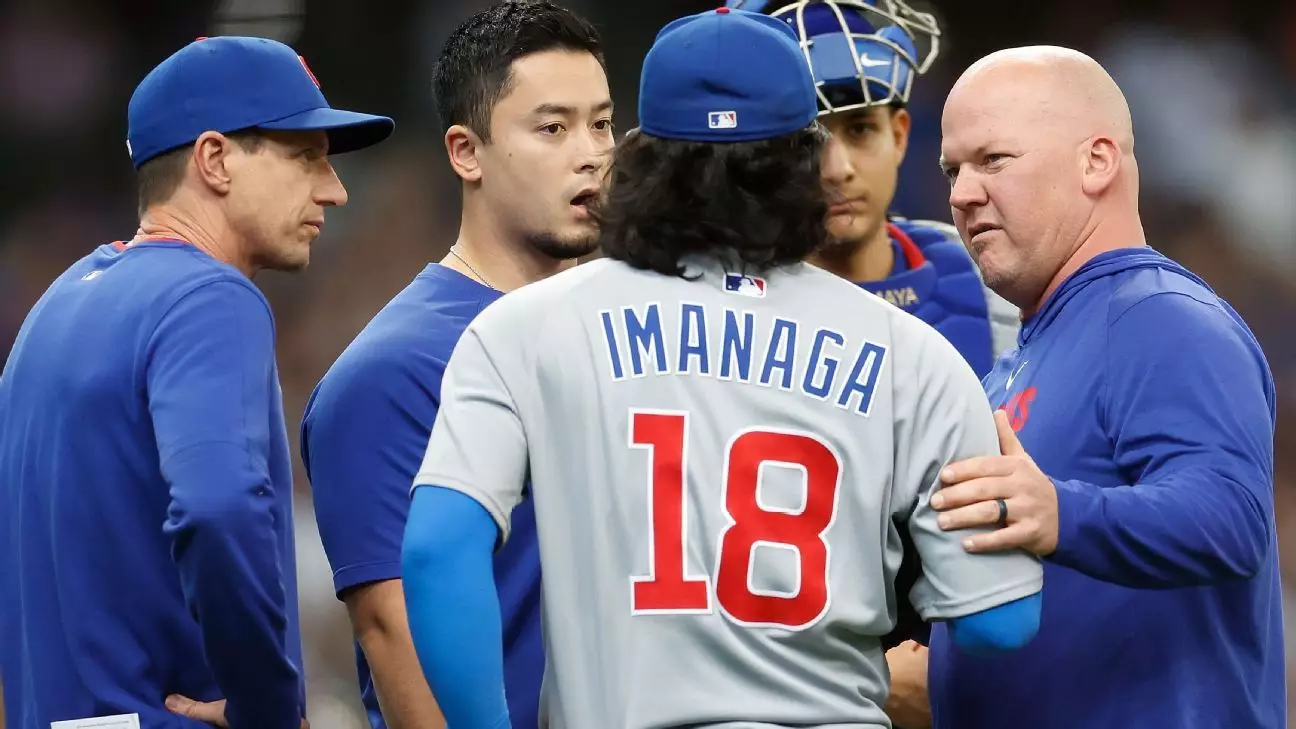The Chicago Cubs find themselves navigating the stormy waters of sports injuries with Japanese left-hander Shota Imanaga now on the 15-day injured list due to a mild strain in his left hamstring. This strategic decision reflects the team’s understanding that while the road to recovery can be fraught with uncertainty, maintaining a positive outlook is critical. Imanaga’s situation underscores the ongoing challenge athletes face in balancing performance aspirations with the need to ensure long-term health. As he plays catch to keep his arm loose while resting his leg, it signals a calculated approach rather than a reckless hustle.
Gleaning Wisdom from Peers
In the world of sports, camaraderie often extends beyond the field, and Imanaga is no exception. Upon realizing the severity of his injury, he reached out to fellow pitcher Justin Steele, who has faced his own struggles with a hamstring issue. While Steele’s ongoing elbow injury complicates his situation, the connection between the two serves as a reminder of the collective experience shared among players. Athletes like Imanaga understandably find solace in knowing that they are not alone, and that wisdom from others can be an invaluable asset during recovery periods.
The potential for mentorship can prove tremendously beneficial for Imanaga as he learns how to manage the intricacies of his specific injury. Armed with insights from Steele, he is better equipped to confront the psychological hurdles that accompany physical setbacks. Dealing with injury is not only a test of physical resilience but also a battle against the mental toll that can lead to self-doubt.
Understanding the Nature of the Injury
Imanaga’s hamstring strain serves as a potent reminder that not all injuries are created equal. Manager Craig Counsell astutely recognized the variability inherent in such issues, noting that “the severity’s different.” Acknowledging that each athlete is unique is crucial in this landscape, where the healing timeline can often be fluid and unpredictable. Drawing parallels between two injuries may be tempting, but the individual body and its responses to strain are distinctly different from one athlete to another.
For Imanaga, the fact that the injury was located in the lower body provides a modicum of relief. Arm injuries are frequently disastrous for pitchers, often leading to extended absences and a drastic shift in career trajectory. Therefore, Imanaga is determined to focus on the positives, using this injury as a period for contemplation rather than merely a setback.
The Importance of Self-Reflection and Preparedness
In his conversations about this injury, Imanaga has thoughtfully examined the impact such a setback may have on his performance. His commitment to preparing thoroughly before each game demonstrates both professionalism and maturity. It illustrates a nuanced understanding of sports injuries—not merely random occurrences but often the result of various factors, including training regimens, physical condition, and sometimes sheer bad luck.
As he contemplates potential adjustments to his preparation, Imanaga exemplifies the spirit of an athlete who is willing to adapt. In a culture where performance metrics define success, the pursuit of self-improvement is an invaluable asset. It transforms the injury from a mere hindrance into an opportunity for growth and renewal.
Impact on Team Dynamics and Future Prospects
The Cubs are navigating a difficult landscape filled with rotational uncertainties, further complicated by Imanaga’s absence. With another key pitcher sidelined, the pressure mounts for the organization to explore viable options, including their top prospect Cade Horton. This current predicament extends beyond Imanaga to signify a deeper systemic challenge within the team’s pitching strategy.
As the Cubs regroup to address Imanaga’s vacancy on the roster, one can’t help but consider the broader implications of injuries on team dynamics. Not only do these injuries challenge individual players, but they also require flexibly re-evaluating team strategies and leadership roles. Adeptly maneuvering through these challenges will test the Cubs’ resilience, defining their character as they strive for the ultimate goal of a championship while supporting their athletes in recovery.
In the wake of adversity, what remains paramount is not solely how the team handles the immediate crisis, but how they integrate the lessons learned into their foundation, allowing them to stand tall, not just as a team, but as a collective of resilient spirits.


Leave a Reply